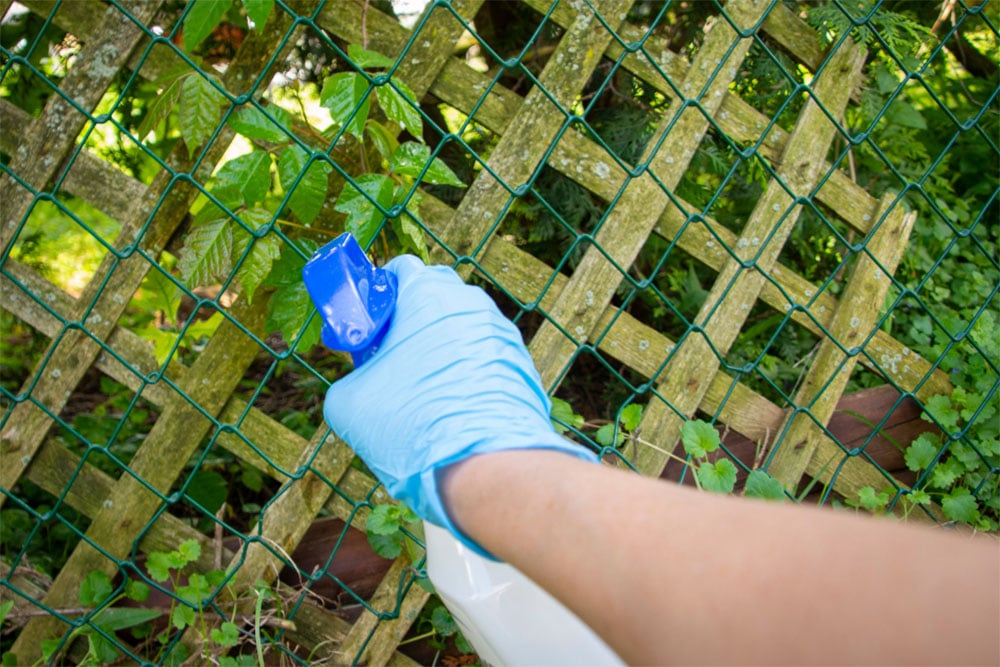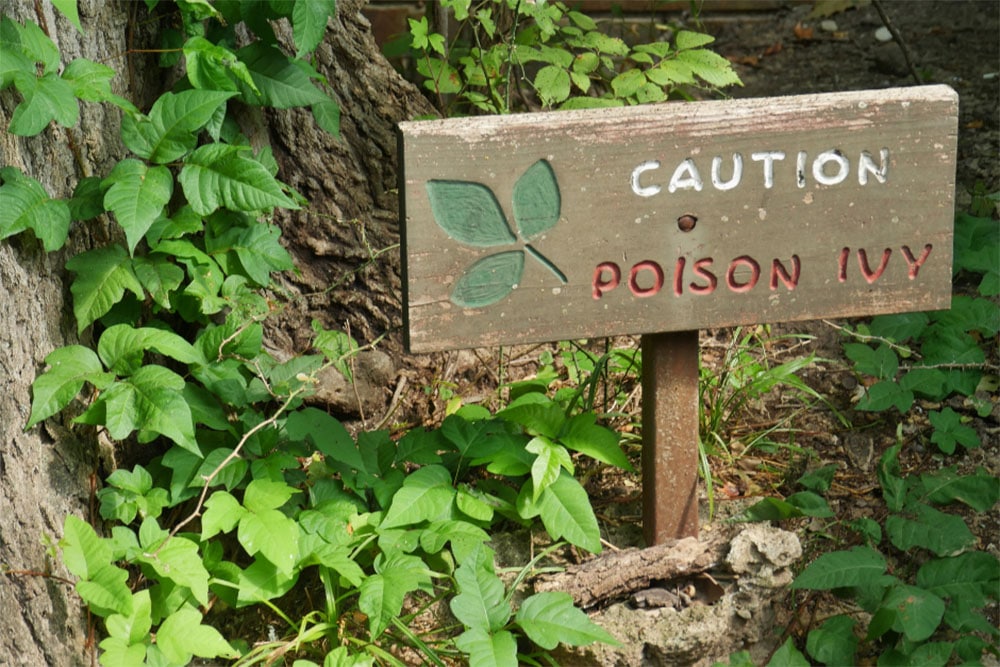Preserving a beautiful and maintained garden can be a difficult and thankless process, especially when it comes to dealing with weeds and irritating plants.
Although most pervasive plantlife can simply be defined as a nuisance, there are some species of plant that can cause serious harm to your health, especially if you do not know what species of plant you are dealing with.
Arguably one of the nastiest plants you can have in your garden is poison ivy, as it can invade your space and leave you with a severe rash. So how can you combat this villain of the natural world?
Well, numerous methods can be used to rid your garden of poison ivy, like removing the plant by the root, hitting it with a weed torch, or creating a homemade herbicide using salt and soapy water.
However, there is one product that always seems to find itself part of the poison ivy discussion and that is household bleach.
But can bleach kill poison ivy? And if it does, how can you use the chemical in a safe and effective way? In this article, we are going to take a look at the benefits of using bleach to kill poison ivy and how you can use the chemical to rid your garden of the pervasive vine.
Can Bleach Kill Poison Ivy?
The short and simple answer to this question is yes, bleach can kill poison ivy.
In fact, bleach is considered a very effective method when it comes to tackling the vine, especially if it has found its way into your garden.
The reason why bleach is capable of killing poison ivy is that it is an extremely potent chemical, which can dry out the plant’s natural oils making it easier to remove.
However, this does not mean that bleach is highly recommended as a poison ivy deterrent, as the chemical is also capable of killing the other plants in your garden and can cause significant damage to the land and infrastructure.
This is why many gardeners choose to dilute the cleaning product in water, creating a solution that is still potent but also more manageable.
How To Kill Poison Ivy With Bleach
As we have previously mentioned, bleach can be a very dangerous and potent product to work with, especially when it comes to using the chemical as a herbicide.
So if you are now interested in using bleach to tackle your poison ivy problem, then the best method is to make a solution using the product, as this will ensure the safety of your garden and make the bleach more manageable.

Down below, we have outlined how you can make your own bleach solution, as well as the various supplies you will need when applying the solution to your garden.
Remember that bleach is a very dangerous chemical and that your safety should always be of the utmost importance.
How To Make A Bleach Solution
What you will need
- Empty spray bottle
- Warm water
- Hydrogen peroxide
- Bleach
- Salt
Method
- Purchase or obtain an empty plastic spray bottle – these can be purchased cheaply from most stores, or you can use an old cleaning solution bottle in your home.
- When you have found or purchased an empty spray bottle, fill the container halfway with warm water.
- Next, you will need to take half a cup of salt and add it to the spray bottle, making sure that it fully dissolves in the warm water.
- After you have done this, add two cups of bleach, making sure that you do not spill the product on yourself or your furniture.
- Next, add half a cup of hydrogen peroxide to the spray bottle and then seal it up.
- Mix the ingredients in the solution, ensuring that all ingredients have fully dissolved.
How To Apply The Solution
What you will need
- Gardening gloves
- Long sleeve shirt
- Long trousers
- Eye goggles
- Face mask
Because bleach is considered a dangerous and harmful chemical, you have to make sure that your skin and face are protected when using the solution, or you could risk severe injury to your person.
Before applying the solution to the poison ivy, we recommend wearing protective clothing that covers any revealing skin such as a long sleeve shirt, long trousers and basic gardening gloves.
Because you are working with bleach, there is a high possibility that your clothing could be damaged during the application process, which is why it is also advisable to wear old clothes for the job, or clothing that you consider to be disposable.
For the next part of the process, you should put on a pair of goggles to ensure that your eyes are protected from any splashback you may receive when applying the solution to your garden.
We would also highly recommend wearing a face mask or face covering, as these are a great way to protect yourself from inhaling any harmful fumes. However, this particular item of clothing is optional.
When you are fully protected, you can apply the solution to the poison ivy in large sweeping motions, to make sure that the vine has been completely covered in the formula.
For the best results, you will need to repeat this process over a few days, making sure to generously soak the ivy and any new growth you can see.
Eventually, this will reduce the plant’s ability to photosynthesize, which will result in its deterioration and death.
Because the solution is extremely potent, it is also capable of killing other plants in your garden, so if you accidentally spray the solution on your other plants make sure to hose them down immediately.
We also recommend cleaning your protective clothing after every use, as this will help to reduce the risk of you being affected by both the bleach and poison ivy.
Is There A Non-Chemical Alternative?
If you don’t want to encounter the risks of using bleach, then you can make a non-chemical ivy killer using substances found in your home.
A popular recipe combines salt, vinegar and dish soap to create a homemade herbicide, which can be used to tackle the vine.
However, it is also capable of killing other plants in your garden and should only be used on poison ivy for the best results.

